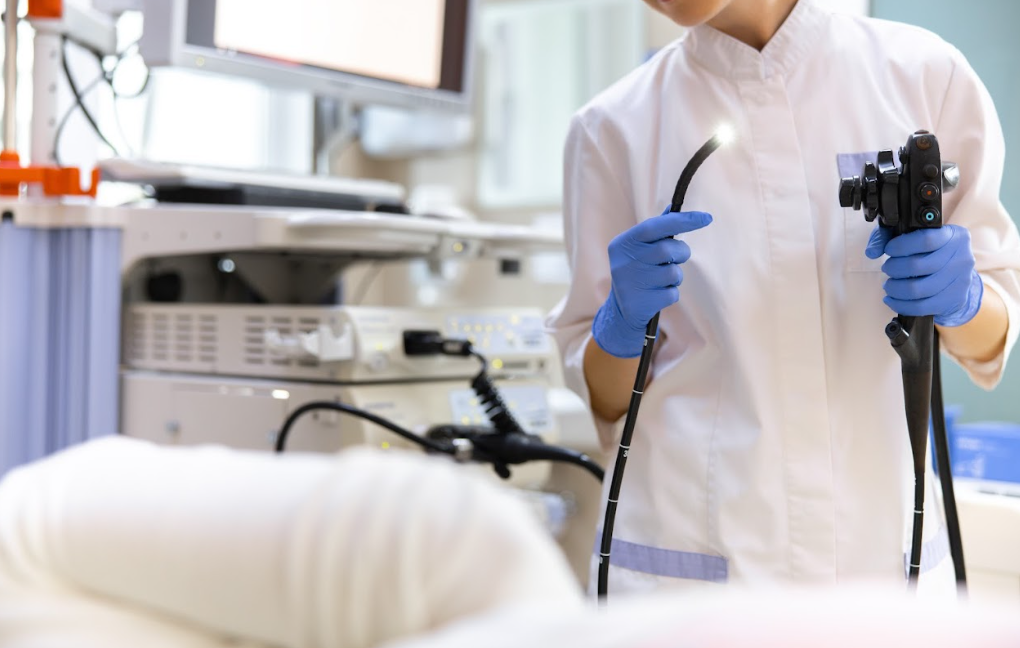Have you ever wondered how doctors get a clear view of the inside of your body without major surgery? The answer lies in a fascinating medical procedure called endoscopy.

This article explains what it is, the wide range of uses it has in modern medicine, and the benefits it offers for both doctors and patients.
What Is Endoscopy?
Endoscopy allows doctors to directly examine the inside of your body. It uses a specialized instrument – a long, flexible tube with a light and a small camera on the tip.
The endoscope is gently inserted into the body through natural openings, like the mouth or the rectum, or through small incisions in some cases. The process usually requires little preparation, depending on the area being examined, and is performed under sedation to ensure comfort.
Endoscopy is generally safe and provides valuable information without the need for more invasive surgery. It allows doctors to view areas of concern directly, take tissue samples (biopsies), and sometimes even treat certain conditions during the same procedure.
Following an endoscopic exam, downtime is minimal. In most cases, patients can return to their normal activities without much delay.
The Uses Of Endoscopy
Endoscopy has a wide range of uses across various medical fields. Here’s a breakdown of each major use:
- Digestive System
Doctors can peek into the upper digestive tract (esophagus, stomach, and small intestine) with an upper endoscopy, which is helpful for checking stomach ulcers, gastritis, swallowing problems, and even haemorrids. Find a haemorrhoid removal clinic Singapore, or near you for help.
A colonoscopy focuses on the colon and rectum, which is crucial for colon cancer screening. Meanwhile, endoscopic retrograde cholangiopancreatography (ERCP) tackles the bile ducts, pancreatic ducts, and gallbladder, aiding in diagnosing and treating problems like gallstones and pancreatic cancer.
- Lungs
Bronchoscopy offers a window into the airways and lungs, helping diagnose coughs, bleeding, and blockages. It also aids in detecting lung infections, cancer, and chronic conditions like chronic obstructive pulmonary disease (COPD).
- Ear, Nose, And Throat (ENT)
Endoscopy helps with sinus infections, nasal blockages, and throat issues like swollen tonsils. It provides a clear view of hard-to-reach areas for ENT specialists.
- Joint
Arthroscopy allows orthopedic surgeons to examine joint problems like torn cartilage and inflammation in knees, shoulders, and other joints. It’s minimally invasive, leading to faster recovery than traditional surgery.
- Urinary Tract
Cystoscopy examines the bladder and urethra, helping diagnose bladder stones, tumors, and chronic infections.
- Fertility and Gynecology
Laparoscopy and hysteroscopy are crucial for diagnosing and treating gynecological and fertility issues like fibroids, endometriosis, and abnormalities of the uterus and fallopian tubes.
- Surgery
Endoscopic techniques are used in many minimally invasive surgeries, like gallbladder removal, appendectomy, and hernia repair, resulting in less pain and faster healing.
Each of these uses makes endoscopy a cornerstone of modern medicine, offering less invasive options and improved patient outcomes.
The Benefits Of Endoscopy
Endoscopy offers several benefits that make it a valuable tool in modern medicine, especially when diagnosing and treating various conditions. Here are some of the key benefits:
- Minimally Invasive
Endoscopy is far less invasive than traditional surgery. It generally involves using natural body openings or small incisions, which means less pain and fewer complications for patients. This minimally invasive nature also leads to quicker recovery times.
- Accurate Diagnosis
The high-quality visual feedback provided by an endoscope allows for a detailed examination of internal organs and tissues. This capability helps doctors make more accurate diagnoses, sometimes immediately during the procedure.
- Treatment During Diagnosis
Endoscopy is not only diagnostic but can also be therapeutic. For example, during a colonoscopy, doctors can remove polyps, or during an upper endoscopy, they can stop bleeding. This dual capability reduces the need for further procedures.
- Reduced Risk Of Infection
Since endoscopy is less invasive, the risk of post-operative infections is significantly lower compared to open surgeries.
- Shorter Hospital Stay
Most procedures are performed on an outpatient basis. This allows patients to recover in the comfort of their own homes and reduces the financial burden of lengthy hospital stays.
- Less Scarring
With smaller incisions or no cuts at all, endoscopy leaves minimal to no scarring compared to traditional surgeries, which is an important consideration for many patients.
- Immediate Results
In many cases, endoscopy provides immediate results, allowing for quicker decision-making in terms of treatment plans. This is particularly beneficial in acute conditions where time is critical.
- Cost-Effective
Because it often requires less time in the hospital and fewer resources compared to open surgery, endoscopy can be more cost-effective.
- Safety
Generally, endoscopic procedures are considered safe with a low risk of complications. This safety profile makes it a preferable option for both diagnostic and therapeutic uses in a wide range of patients, including those who may not be candidates for more invasive surgeries.
These benefits make endoscopy a go-to option for many healthcare providers, enhancing patient care through safer, quicker, and more efficient diagnosis and treatment methods.
Takeaway
Endoscopy is a fundamental tool in medical practice, offering diagnostic accuracy and therapeutic capabilities with minimal invasiveness. It improves patient outcomes by enabling quick diagnoses and treatment, reducing recovery times, and minimizing risks.


